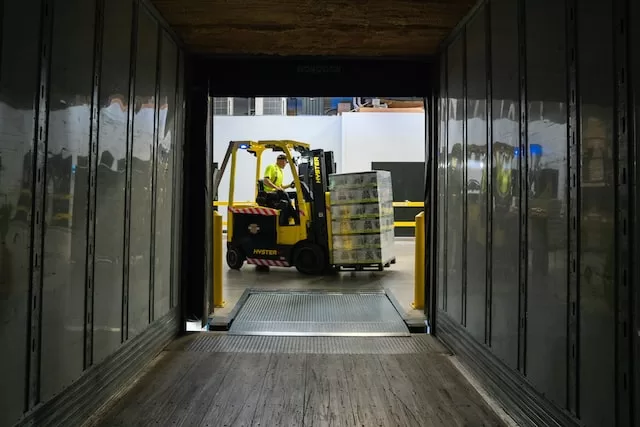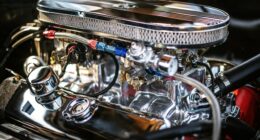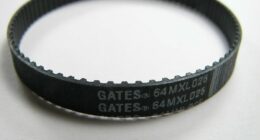The two most common types of warehouse machines are stackers and forklifts. Stackers are smaller and more manoeuvrable than forklifts. Stackers also typically have shorter forks than forklifts. This means that they are better suited for handling smaller loads. Finally, stackers generally have a lower lifting capacity than forklifts.
What is a stacker?
A stacker is a type of forklift that is used to move stacks of materials, usually pallets. Unlike a regular forklift, a stacker has a mast that extends vertically, allowing it to reach higher levels. Stackers are often used in warehouses and factories to move goods around.
What is a forklift?
A forklift is a type of industrial truck that is used to lift and move heavy loads. Forklifts are powered by either an internal combustion engine or an electric motor, and they typically have four wheels. The forks on a forklift are used to pick up and move pallets of goods, and the lifting mechanism can be operated manually or by hydraulic power.
Stackers Vs. Forklifts – The difference
Both stackers and forklifts are used to move materials around a warehouse or factory, but they differ in how they are operated and how they are used.
Stackers are usually manually operated, while forklifts are powered by an engine. Stackers rely on the operator to lift and lower the load, while forklifts use hydraulics to lift and lower the load.
Stackers are typically smaller than forklifts and can only lift lighter loads. They are often used in tight spaces where a forklift cannot operate. Forklifts can lift heavier loads and are better suited for moving materials over long distances.
How to choose the right one for your needs?
There are a few things you need to take into consideration when choosing between a stacker and a forklift. The first is the weight of the load you will be lifting. If you regularly lift heavy loads, then a forklift is likely the better option. If you mostly lift lighter loads, then a stacker might be better suited for your needs.
Another thing to consider is the space in which you’ll be working. If you have limited space, then a stacker might be the better option since it takes up less room than a forklift. However, if you have more room to work with, then a forklift will give you more lifting power and range of motion, making it easier to manoeuvre around larger objects.
Finally, think about the types of materials you’ll be lifting. If you regularly lift delicate or fragile items, then a stacker might be the better choice since it can provide more stability and control when lifting these types of items. If you mostly lift heavier items such as pallets or crates, then a forklift would be the better machine for the job.
What are the two most common types of forklifts?
Forklifts come in many different sizes and shapes, but they can generally be classified into two main types: Electric and Internal combustion (IC).
Electric forklifts are powered by batteries, which makes them environmentally friendly and quieter than IC forklifts. They’re ideal for indoor use, as they don’t produce harmful emissions. Electric forklifts are also more expensive than IC forklifts, so they may not be the best choice for heavy-duty applications.
IC forklifts run on gasoline, diesel, or propane. They’re more powerful than electric forklifts and can be used for outdoor applications. However, IC forklifts produce emissions that can be harmful to the environment and people nearby, so they should only be used in well-ventilated areas.
What are the 7 classes of forklifts?
Forklifts are classified into seven different categories according to the ANSI/ITSDF B56.1 standard. These categories are:
1. Class I – Electric motor rider forklifts
2. Class II – Internal combustion engine rider forklifts
3. Class III – Electric motor hand-operated forklifts
4. Class IV – Internal combustion engine hand-operated forklifts
5. Class V – Rough terrain forklifts
6. Class VI – Narrow aisle electric motor rider forklifts
7. Class VII – Very narrow aisle electric motor rider forklifts
Do you need a license for a pallet stacker?
If you operate a pallet stacker in a warehouse or other industrial setting, you will need to obtain a license from the relevant authorities. Depending on your country of residence, this may be the Department of Labor or some other government agency. To get a license, you will need to pass a written examination and demonstrate your ability to safely operate a pallet stacker.
What is the difference between LO and LF forklifts?
There are two main types of forklifts: lift trucks and stackers. Lift trucks are the most common type of forklift, and they come in two varieties: LO (low overhead) and LF (low floor). Both types of lift trucks have their advantages and disadvantages, so it’s important to choose the right one for your needs.
LO forklifts are more powerful than LF forklifts, but they have a higher overhead clearance, which can make them difficult to manoeuvre in tight spaces. LF forklifts have a lower overhead clearance, which makes them easier to manoeuvre in tight spaces, but they are not as powerful as LO forklifts.
What is a stacker in a warehouse?
A stacker is a type of forklift that is used to move pallets or other heavy objects from one location to another. A stacker has a lifting platform that can be raised or lowered, and the forks can be moved up and down to allow the stacker to pick up and move pallets. Stackers are typically used in warehouse applications where there is a need to move large numbers of heavy objects from one location to another.








